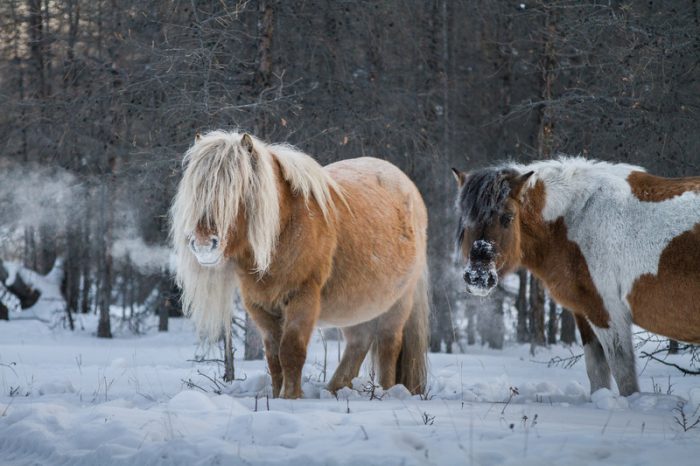The thawing of the permafrost—land in the far Arctic that usually stays frozen all year round—is a climate change story that has many experts more than a bit worried. But it has led to some very interesting discoveries. Recently, a bunch of 40,000 year-old roundworms became the oldest known creatures to come back to life after being thawed out.
And while this poor little fella isn't coming back to life, the body of an ancient foal is thrilling Russian scientists. The fossil is of the extinct species Equus lenensis and it is in excellent condition. From its hooves to its tail, and its wool to its organs, its body is remarkably well-preserved. All this despite the fact that it is estimated to be between 30,000 and 40,000 years old.
Wow!
Ya ku not believe it!
The fossil will be displayed at the Mammoth Museum in Yakutsk, Russia. (Getty Embed)
The fossil was discovered in the Yakutia Republic of Russia. This is a northeastern region that is famous for its woolly mammoth fossils. For example, a mammoth specimen found in 2013 on Maily Lyakhovsky Island in Yakutia was in such good condition, they were able to take samples of blood and flesh.
The horse fossil was discovered in a deep crater called Batagaika. And just like the mammoth mummy we mentioned, this specimen offered scientists a variety of ancient samples to study—nose hairs, bodily fluids, dirt from between its hooves, and more. A goldmine to paleontologists!
A sad end becomes an amazing legacy
After investigating the ancient foal, scientists guess that this horse was about two months old when it accidentally fell into a natural trap filled with water and drowned. It's a sad thought for such a young animal. But this is also what allowed it to be nearly perfectly frozen in time for us to study.
Watch a video about the incredible discovery below.
 This modern Siberian horse is a distant relative of the fossil that was found. (© George Oprea | Dreamstime.com)
This modern Siberian horse is a distant relative of the fossil that was found. (© George Oprea | Dreamstime.com)









